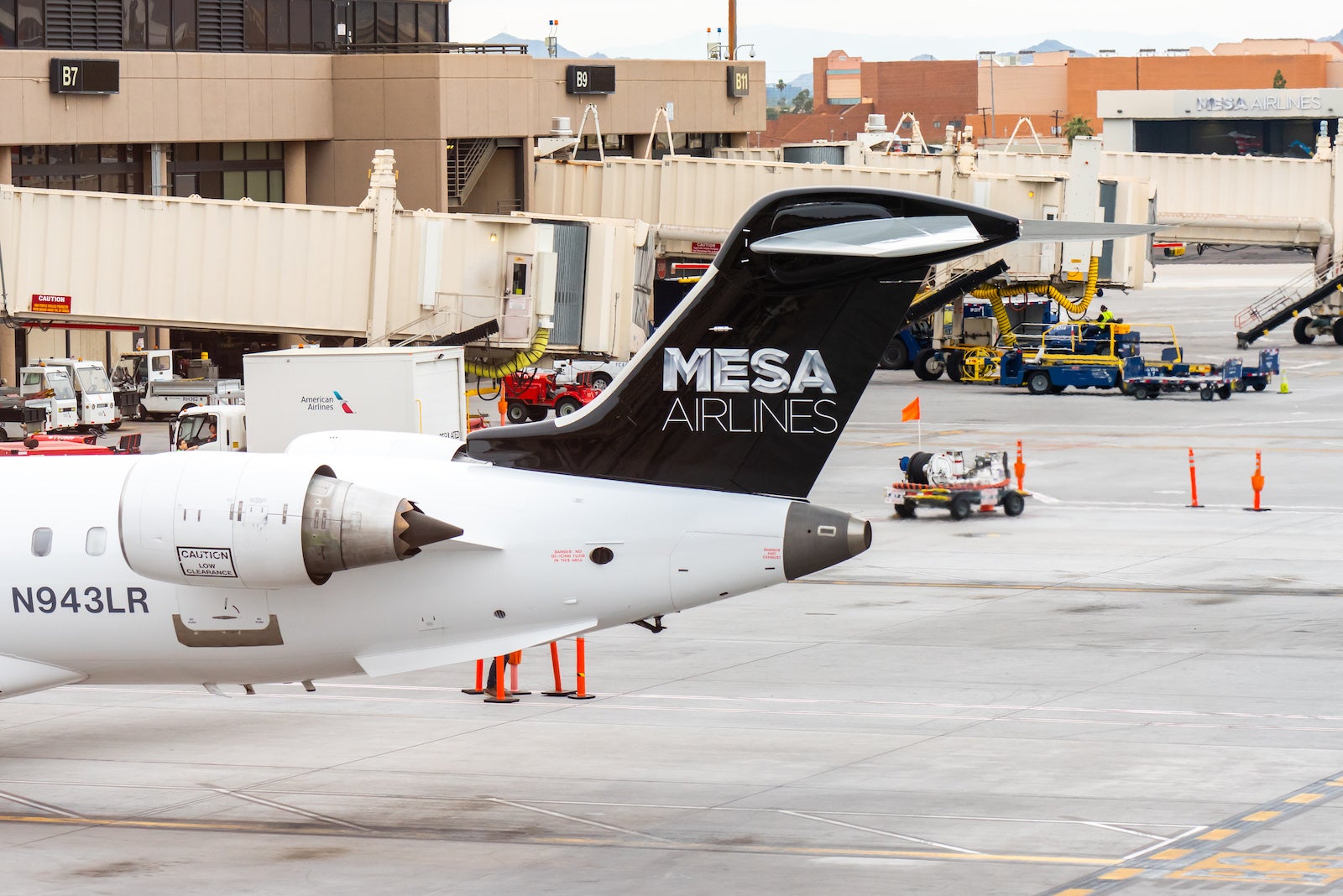Regional player Mesa Airlines buys 29 training planes to help fight pilot shortage
Editor's Note
A key regional airline is trying something new to combat the pilot shortage and the high cost of earning the flight experience necessary to fly for an airline.
Mesa Airlines, which operates as United Express and American Eagle, has purchased 29 training aircraft, and will use those planes to allow pilots to earn the 1,500 hours necessary to become an airline pilot — with no upfront costs and no interest.
In exchange, pilots will fly for Mesa upon reaching 1,500 hours, and will pay back their flying costs over a three-year term during their employment at the regional. Mesa this month began paying its first officers a starting rate of $100 per hour, the highest rate in the regional industry.
Want more airline-specific news? Sign up for TPG's free biweekly Aviation newsletter.
This new program, the Mesa Pilot Development Program, is not a training program — pilots who apply need to have a commercial license with a multi-engine add-on. Instead, it's designed to be an economical way to get pilots to the 1,500 hours they need to earn an FAA airline transport pilot certificate (ATP), the license that's required to fly as an airline pilot.
One of the most difficult parts of becoming a pilot is building time. Once earning their commercial pilot certificate at around 250 hours, pilots are generally left on their own to get the rest of the time necessary to earn the ATP certificate. Many pilots become flight instructors, while others fly smaller aircraft for hire, a type of flying that is known as Part 135. Other pilots just fly for fun — often to earn the requisite number of hours for a Part 135 job (many of those opportunities require 500 hours or more). Attrition can be high during this phase of a new pilot's career.
"There are probably 20,000 aspiring aviators out there who are trying to build time," Mesa CEO Jonathan Ornstein told TPG in an interview. "With wages where it's at, they all want to be pilots. So what's holding them back?"
Mesa's solution offers flying opportunities — Ornstein calls it a flying club — in a Pipistrel Alpha Trainer 2 aircraft. Pilots can fly up to 40 hours per week, and the flying will be billed at $25 per hour — a rate significantly below market for aircraft rentals and fuel. (An hour of time in a Cessna 172 with the latest avionics — the most popular training aircraft — can cost more than $200.)

The Pipistrel is a far cry from the aircraft that Mesa flies in regional service — the CRJ-900 and Embraer E175. It's a lightweight, single-engine training aircraft that is so light, it qualifies for a special Federal Aviation Administration certification called Light Sport Aircraft, which means that pilots can legally fly it with reduced training and medical requirements. Mesa's initial fleet of 29 will be based in Inverness, Florida, and eventually, in Mesa's home state of Arizona over the next year — Ornstein mentioned the Phoenix area but said no specific airport had been selected yet. The airline also has options to purchase 75 more of the Slovenian-built aircraft.
More: How a pilot shortage could leave travelers with higher fares and fewer options
The economics of this new strategy could be a win-win, though it likely comes at a considerable cost to Mesa, given the clearly subsidized flying time the carrier is providing. Pilots will be able to earn time on favorable terms, earn a spot on Mesa's seniority list and earn flight benefits before they're eligible to become Mesa first officers. If a pilot joined Mesa's program right at 250 hours, it would cost them about $10,500 per year, given the interest-free terms Mesa is implementing. Participants in the program are also eligible to join United Airlines' Aviate program, the carrier's pilot pathway program.
In exchange, Mesa gets three years of service from its pilots at a time when pilots often spend two years or less at regional airlines, as mainline carriers have ramped up hiring to contend with a surge of retirements. Pilot retention is one of the biggest concerns in the regional airline industry. Should a pilot leave early, Mesa would require that flying costs be paid back, but would not charge any sort of penalty, at least not initially, Ornstein said.
A common criticism of the so-called 1,500-hour rule, which came about after a 2009 accident, is that the time earned often does little to prepare candidates for the airline environment. Mesa's use of such a light aircraft for this program seems to underscore that criticism.
"It's obvious that it's all about money and it has nothing to do with safety," Ornstein said. "And you know, no other country in the world has adopted this preposterous rule."
More: FAA denies regional airline's request to hire certain pilots with fewer flight hours
Regional airline leaders took aim at the 1,500-hour rule at an executive conference this week, with some calling the rule a threat to the industry's survival. The conference, held in Washington, opened a day after the FAA rejected the petition of Republic Airways, another regional, to allow graduates of its training academy to earn a restricted version of the ATP certificate at 750 hours.
Since the program was announced early Thursday, Ornstein said that there's been a lot of interest.
"We've had a great response already on the website," he said.
